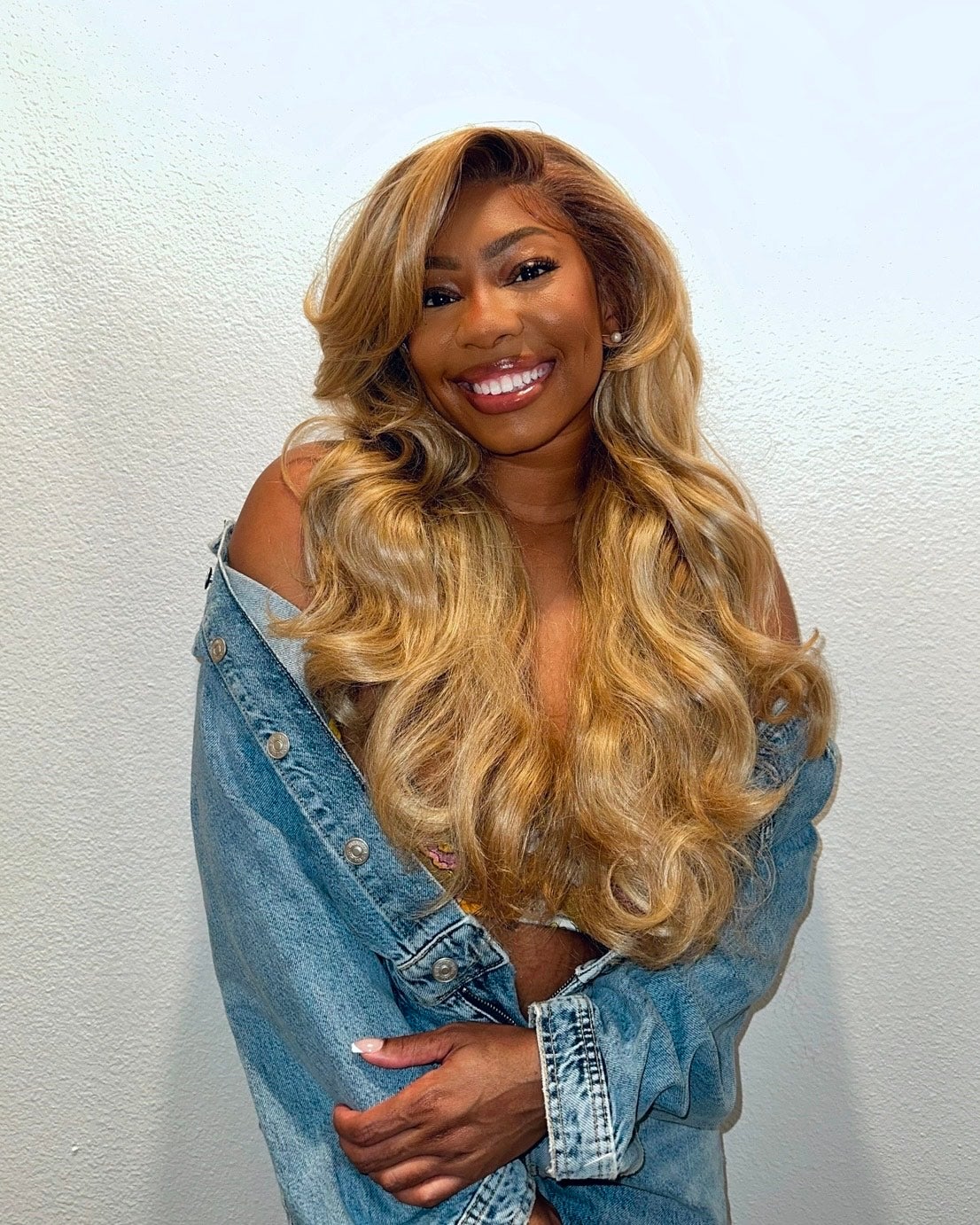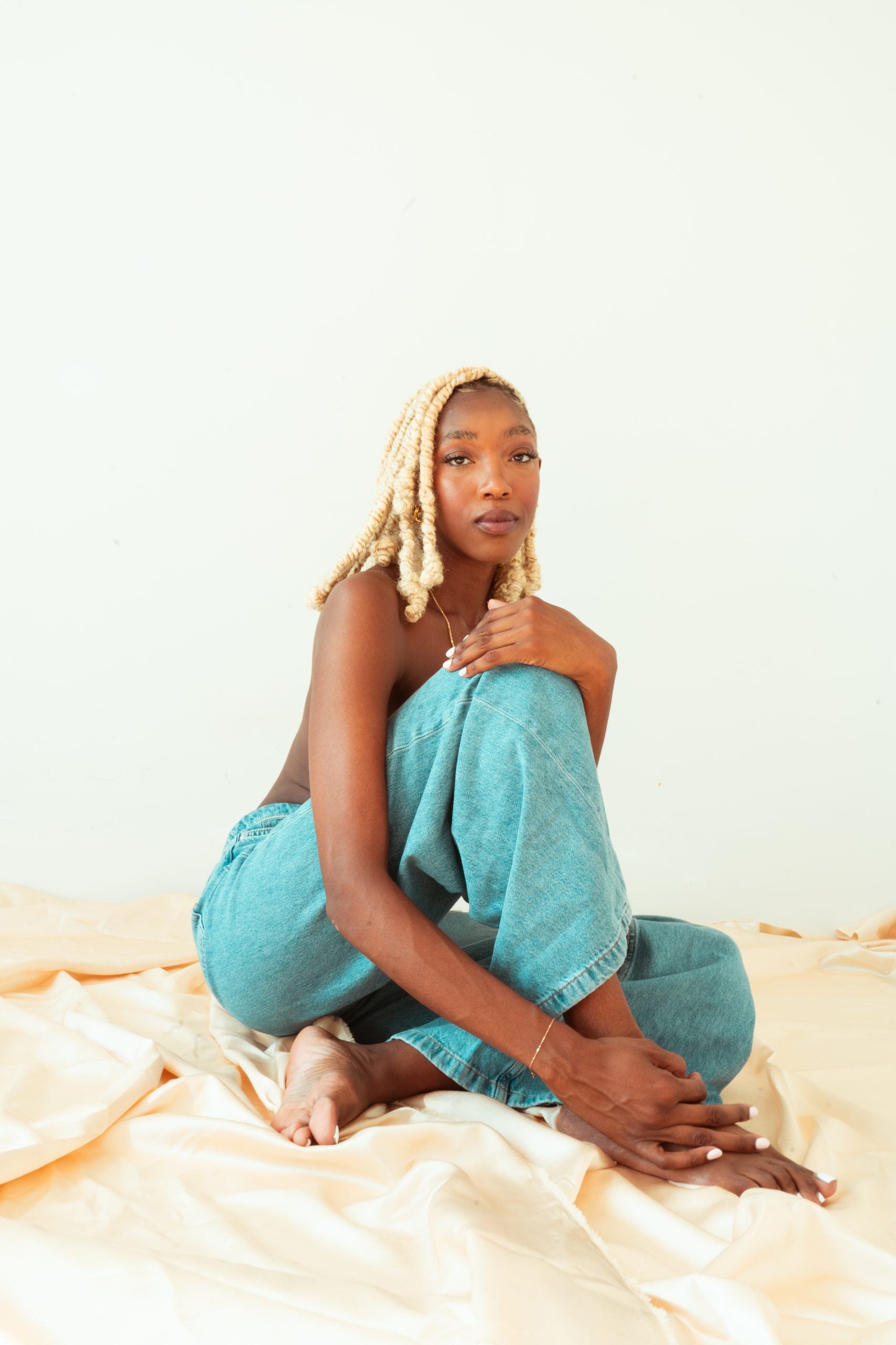
When I was 19, I went to a college party with my friend, who was also a Black girl. As we mingled with strangers—as one does—we ended up chit-chatting with two random white guys. One guy was friendly and easygoing, but his friend, let’s call him Party Guy, seemed visibly uncomfortable making small talk with us. He was the kind of guy who acted like being friendly and respectful to someone he didn’t deem desirable would surely translate as flirting—or worse, romantic interest.
“Man, I love blondes! Blondeeee women are it for me. I just love blondes, man. Buhhh-londeee!” he declared out of nowhere.
It was Party Guy’s bizarre and wholly unnecessary — ‘cause chileee truly no-freaking-body was checking for him — way of saying his type, his “preference” was white girls, not us—and not just white, the whitest of the white. Message received, brah.
Blonde hair has long functioned as coded language for whiteness—often signaling a very specific, idealized version: skinny, blue-eyed, early-aughts Abercrombie catalog, Alix Earle, Gigi Hadid, and Pam Anderson. Tressie McMillan Cottom—sociologist, MacArthur fellow, and New York Times columnist—has written about how blonde operates not just as a descriptor of whiteness, but as a social status symbol intertwined with class, gender, and power. In a 2023 New York Times op-ed, Cottom explains how words like ‘citizen,’ ‘taxpayer,’ or even ‘American’ are often used to describe dominant racial groups—and how ‘blonde’ functions similarly, as shorthand for who gets seen as the standard of beauty and belonging.
Cue Carrie Bradshaw voice: if blonde hair is so entangled with whiteness in the cultural imagination, what happens when a Black woman claims it for herself—and looks damn good while doing so? Is there subversive power and a soft disruption in stepping out with a platinum ‘fro, golden knotless braids, or a 40-inch 613 bussdown?
Black women are still exploring blonde hair in 2025, and it’s becoming even more visible, stylish, and experimental. Beyoncé’s Cowboy Carter era brings rich, sun-drenched blonde shades that riff on Southern glam and rebel glam. Rihanna, always a trendsetter, made a subtle update to her long-time stick figure avatar on Instagram by adding blonde hair—a change her fans definitely noticed. Zendaya stunned with a warm, honey-toned blonde bob throughout her memorable Challengers press tour and red carpet appearances. Da’Vine Joy Randolph accepted her first Oscar with glamorous, loose blonde curls. Even social media saw a surge in #BlackBlondeSummer hashtags, where everyday women shared their blonde transformations—curly, buzzed, protective-style—each captioned with joy, defiance, or both.
And of course, OG Black blondes like Mary J. Blige are still holding it down, alongside newer standouts who’ve made blonde their signature, such as Savannah James, Laverne Cox, Nene Leakes, and Angelica Ross.
To dig deeper into the cultural impact, we spoke with three Black women whose blonde hair is more than a look—it’s a form of self-expression, creativity, and unapologetic confidence. They open up about the key style and self-care lessons rocking blonde hair has taught them.
Christina Henry, Navy Quartermaster

Christina Henry first experimented with blonde hair in 2017. At the time, she kept it casual—rocking blonde tresses only on weekends, thanks to the ease and versatility of wigs. But by 2022, she’d gone full-time blonde. “I got so much love, and the attention was so rewarding—I love attention,” laughs Henry, who says compliments on her hair became a major mood-booster. “When I put looks together, I feel like it just eats. The color against my skin—it’s just the best.”
But the switch came with challenges too. Henry initially felt anxious about others possibly perceiving her decision to go blonde as an attempt to emulate whiteness or as an expression of self-hate. And as countless Black women in the workforce know all too well, debuting a new hairstyle in an environment where you’re one of the few Black women can feel daunting and anxiety-inducing—especially in a rigid space like the Navy. Will coworkers make uncomfortable or disrespectful comments? Will you be bombarded with invasive, annoying questions you don’t want to answer?
“The first day I showed up to work with blonde hair, someone said, ‘Oh look, it’s Karen,’” she recalls. “But I also got a lot of positive feedback from the women.” Most of the negativity came from white men—or “salty sailors,” as Henry calls them—who made snide comments and questioned whether her hair was in regulation.
Still, she didn’t budge. “It feels really good that I stayed true to the blonde. I’ve never felt this amount of confidence with any other hairstyle or hair color,” says Henry. “I hated my hair growing up. And now I just love being able to do whatever I want and express myself through hair and clothing. Once I got over the hurdle of caring what other people thought about my hair, it made me think, why do I care what they think about anything else? I don’t fear the judgment of others so now I can literally do what I want and the possibilities are endless.”
Camille Blue, Traveling Hair Artist and Content Creator

“Whatever makes you feel good, do it,” says Camille Blue. She’s the voice behind the popular TikTok that gave a cheeky wink to natural bottle blondes.
Blue wore her hair in locs for two years but parted with the style after experiencing an oh-so-familiar feeling: the urge to drastically change her appearance after a breakup and mark a fresh chapter with a new hairstyle. She shaved her head, first trying out ginger hair and then settling on platinum blonde. “Nobody’s words could get to me, no one’s stares could get to me,” Blue recounts of her earlier blonde days, which she credits with making her confidence skyrocket. Next came coloring her eyebrows an identical platinum blonde. “Once I played around with it a little bit, I was like, I think this might be my look. Everyone around me was like, ‘that’s your color!’”
In early 2024, Blue started growing her hair out, which opened the door for even more creative experimentation, from blonde extensions to various braided styles. “It’s very fun!,” says Blue, who’s been enjoying the freedom of being a self-employed creative outside the confines of office culture. “Growing up, I followed the trends and then I started to find my voice during the pandemic but it wasn’t quite there yet…once I started playing with my hair, I started to find and become comfortable with my sense of self without worrying about, was that the right thing to say––or the right thing to do?”
Making the leap to blonde opened the door to bold style exploration—driven by curiosity, not outside opinions. “With this hair, you kinda have to be confident. You can’t walk around with brown skin and platinum blonde hair and not be confident––you have to own it.”
Taylor Hawkins, Model, Content Creator, BRWNSTU Producer

“I always thought Black women wear blonde better,” Taylor Hawkins says, reflecting on the pantheon of Black women who’ve gone blonde across time. “I know that’s a lil controversial but just the contrast [between] platinum blonde and our skin, to me it just pops.”
Hawkins’ first foray into blonde was a brassy honey blonde à la L’Oréal box dye during her sophomore year of college. Shortly after came an impromptu champagne blonde buzz cut ahead of a birthday—and she’s been happily blonde ever since, going on seven years.
While Hawkins’ online presence exudes confidence and It Girl energy, short blonde hair initially felt vulnerable, even uncomfortably so. “That first week with that buzz cut, you feel so exposed,” she says. “When you’re younger, going to class, it’s like—how are people going to react? It gave me that push to not care what people thought, but it took a minute. At least several months.”
Sporting ultra short hair — which came at the same time as the blonde — was the first time in Hawkins’ adult life that she wasn’t dependent on heat-intensive styles, due to her hair’s fragile state from the bleach. “I guess I feel like my most natural self because I’m wearing it curly. I never used to just wash my hair and go to school––I’d always straighten it or pull it back. It’s refreshing to just hop in the shower, put in a bit of curl cream, and go about my day. Or do the finger waves and slick it down. The color isn’t natural, but wearing more natural styles has been a confidence booster.”
There’s been a lot of love shown, Hawkins says—especially from other Black women. But there’s also been unsolicited advice from people who don’t understand or appreciate her blonde. A prominent industry vet once suggested she dye her hair darker—brown or black—to get more bookings and “look more youthful and less edgy.” Then there was the ex-boyfriend who brought all kinds of hateration into the dancery when Hawkins asked his opinion on a light blonde style she was considering.
“I should never be asking a man for no doggone hair advice—especially not a straight man,” recalls Hawkins. “But I was like, ‘oooh what do you think if I get a 613 bussdown?’” Unfortunately, her ex-beau’s response very much gave no taste, no vision! “He said, ‘I think that you’re trying to look too white.’ Men really be your biggest haters but I be rocking my lil 613s now.”
People should do what makes them feel the best and not be afraid to try something new, says Hawkins, and if you’re fortunate to connect with a trusted stylist, like her go-to hair stylist Orlando George, who is based in Brooklyn, then even better. After all, “you’ll never know what works if you don’t try.”







